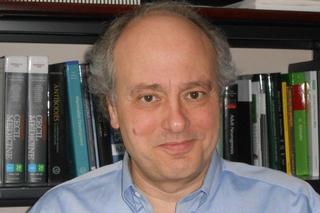Goldman Lab
Welcome to the Division of Cell and Gene Therapy
In the division of Cell and Gene Therapy, within the Center for Translational Neuromedicine (CTN), our goal is to understand the regulatory control of stem and progenitor cells of the human CNS, and to utilize that knowledge to design new approaches for treating neurological diseases, primarily using cell and gene therapy. We have two principal focuses, one on the glial disorders potentially modifiable through a better understanding of glial progenitor cell biology, and the other on those neuronal disorders potentially treatable through the induction of neuronal addition or replacement from mobilized endogenous stem and progenitor cells. Our disease targets are those attributable to dysfunction or loss of single cell types; for instance, demyelinating disease is studied as a potential target for oligodendrocyte progenitor cell delivery, while Huntington’s disease is studied as a potential beneficiary of medium spiny neuronal replacement from endogenous stem cells. Conversely, gliomas and gliomagenesis are studied from the standpoint of dysregulated signaling by endogenous glial progenitors.
In regards to the glial disorders, we are targeting an expansive category that includes not only multiple sclerosis and vascular demyelination, but also the hereditary leukodystrophies and storage disorders, as well as glial neoplasms and even neuropsychiatric disorders. In particular, we have a strong focus on using cell transplantation technologies for the treatment of the glial and myelin disorders.
At the same time, we continue to study adult neurogenesis, in both songbird and mammalian models, with the goal of mobilizing endogenous progenitors in those neurodegenerative disorders potentially ameliorated by neuronal replacement. Our intent is to induce neuronal production in adults as a means of structural repair of damaged or diseased neural circuits, with the induction of medium spiny neurogenesis for cell replacement in Huntington’s Disease being prototypic.
To these various ends, we have developed a broad set of stem and progenitor cell focused technologies that have permitted us to make substantial progress on many fronts.

Steven A. Goldman, M.D., Ph.D.
Principal Investigator
ORCID: 0000-0002-5498-4303
Major Lines of Investigation
View All Major Lines of InvestigationPublications
View All Publications- In vivo selection and glymphatic delivery of AAV5 capsids engineered to target human glial progenitor cells.; bioRxiv : the preprint server for biology. 2025 Jul 04.
- Human glial progenitors transplanted into Huntington disease mice normalize neuronal gene expression, dendritic structure, and behavior.; Cell reports; Vol 44(6), pp. 115762. 2025 Jun 10.
- Newly generated striatal neurons rescue motor circuitry in a Huntington's disease mouse model.; Cell reports. 2025 Apr 05.
- A curious concept of CNS clearance.; Nature neuroscience. 2025 Mar 11.
- Glymphatic clearance is enhanced during sleep.; bioRxiv : the preprint server for biology. 2024 Sep 15.
- Shared patterns of glial transcriptional dysregulation link Huntington's disease and schizophrenia.; Brain : a journal of neurology; Vol 147(9), pp. 3099-3112. 2024 Sep 03.
- JC virus spread is potentiated by glial replication and demyelination-linked glial proliferation.; Brain : a journal of neurology. 2024 Aug 12.
- Co-Transplantation-Based Human-Mouse Chimeric Brain Models to Study Human Glial-Glial and Glial-Neuronal Interactions.; bioRxiv : the preprint server for biology. 2024 Jul 06.
News
Affiliations
Contact Us
Goldman Lab
601 Elmwood Ave
Rochester, NY 14642
(585) 276-2298












